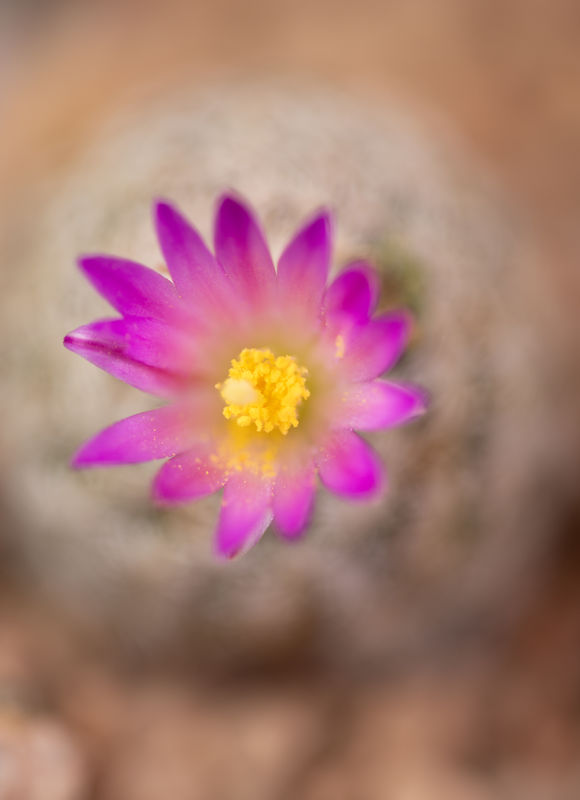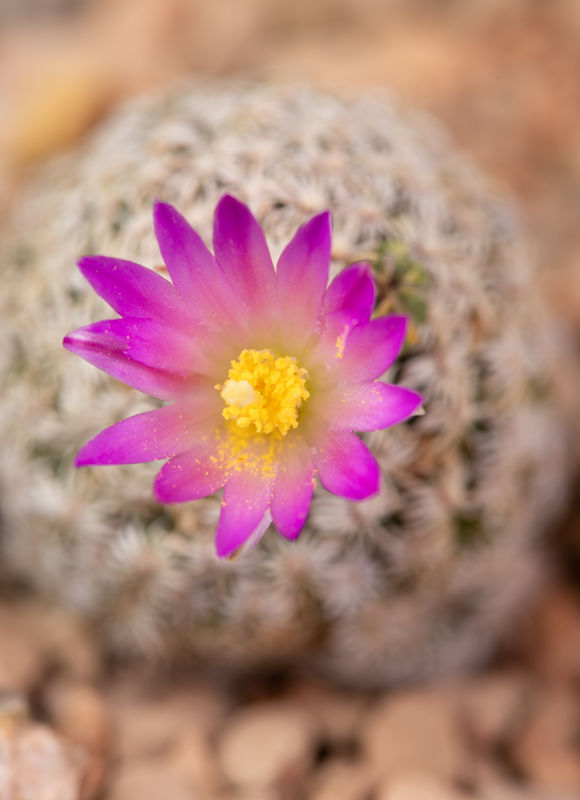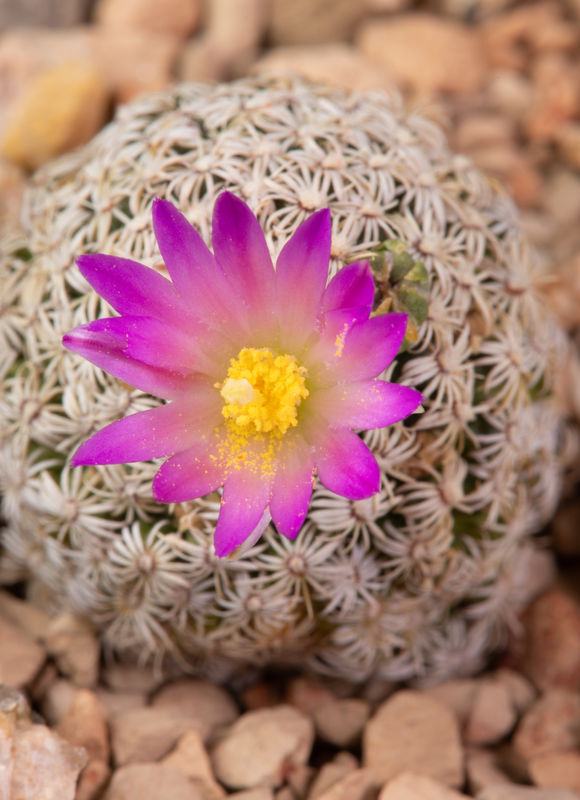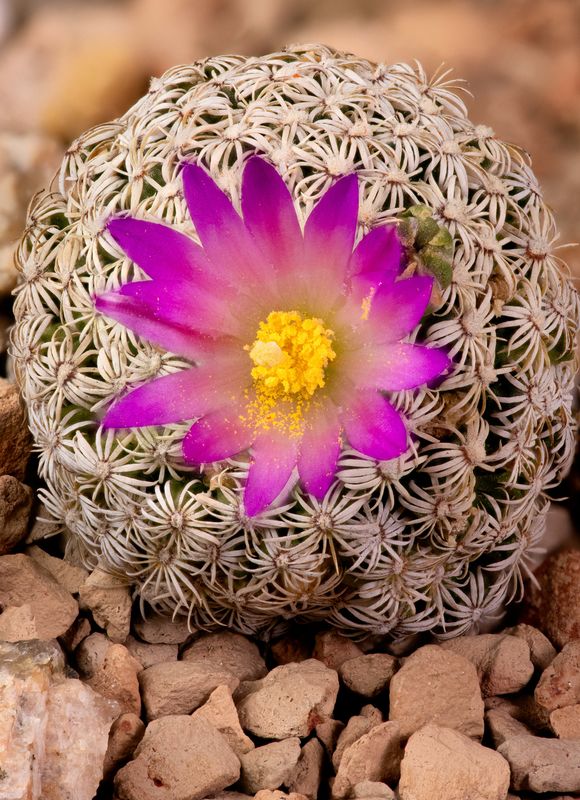Macro Question
Jan 4, 2021 14:49:47 #
Macro and micro are terms of measurement that often appear as prefixes to other words. Macro refers to large things. Micro refers to small things. They each have a wide variety of uses, but this simple rule holds true for all cases.
Jan 4, 2021 14:58:45 #
amfoto1
Loc: San Jose, Calif. USA
carney2 wrote:
Due to being stuck in one place because of the vir... (show quote)
The main concern using very small apertures is "diffraction". That's an optical effect the causes loss of fine detail.
With a camera around 20MP and assuming a print size around 8x10 (or 8x12) without cropping, diffraction begins occurring about f/7.1 with APS-C cameras or f/10 with full frame. As the lens is stopped down, or with higher resolution cameras or cameras that use smaller format sensors, and with greater enlargement of the image diffraction gradually increases. In truth, diffraction can be dealt with up to around f/16 pretty easily simply by doing a bit more sharpening in post-processing. Maybe even f/22. But caution should be used beyond that (hence, people use larger apertures that render less depth of field, but take multiple image and do "focus stacking").
There's also diffraction-related concern about the "effective aperture" of a lens. Macro lenses that extend, that grow longer as they are focused closer, will also see their effective aperture size reduced. An extreme example of this is a Canon MP-E 65mm Macro lens I use. This is an ultra-high magnification lens. In fact, the least magnification it can do is 1:1 that's the max magnification many other macro lenses can do. In other words, this lens is "macro only" (or "micro" if using Nikon lenses... or "mikro" if shooting with some European brands). And the MP-E 65mm goes as high as 5:1 or 5X magnification. That can fill a camera's viewfinder with a grain of uncooked rice.
But then there is this lens' aperture, which is also extreme, because it nearly doubles in length when focused to it's maximum. At minimum focus distance, it's f/2.8 wide open and the smallest aperture you can stop it down to is f/16. But, when focused to maximum magnification where the lens is extended to it's longest, that same f/16 setting becomes an effective f/96 aperture as far as exposure is concerned. I don't know that this affects depth of field, as it's extremely shallow regardless. I also am not certain if the effective aperture also affects diffraction.... but from what I can tell looking at images, I think it does.
Below was shot with the MP-E 65mm at around 3.5X magnification and set to f/16... At these settings, the depth of field is a little less than 1/2 a millimeter and the effective aperture is approx. f/70. To me there appears to be quite a bit of detail lost to diffraction:

Would the above have been better using a larger aperture and focus stacked? Yes, but it also would have been impossible. Even a tiny, newly hatched snail is too fast moving to be able to focus stack! (It was difficult even getting focused on the subject at 3.5X... the MP-E 65mm is manual focus only).
Shooting macro is always sort of a "balancing act"... First you need to decide a focal length. Too short reduces working distance, putting you right on top of the subject. Too long makes for very shallow depth of field and difficulty getting a steady shot. You also have to weigh aperture/shutter speed/ISO versus depth of field and stability. How small aperture is too small? How high ISO is too high? How slow shutter speed is too slow?
One thing that can help is flash. There are macro specific flashes, but a lot can be done with a standard flash.
The snail above what shot with a ring light. I only use that with very high magnification... 2:1 (2X) and higher. I'm not a fan of ring lights at lower magnifications. They look "clinical" to me, with too flat lighting. For that reason, the MP-E 65mm is the only macro lens I use with a ring light.

For other macro lenses with less magnification, I use a twin light. That's a flash with two separate, small heads. I use them on a dual flash bracket so they can be adjusted a variety of ways to provide main and fill light from various angles.


But it is also possible to use standard flashes for macro work. All you have to do is diffuse them to reduce their output, so they won't overpower the close-up subject. I use several layers of gauze bandage held over the flash head with a rubber band. The other trick is positioning the flash off-camera. I usually just hold it where I want it. I've used this often in the field, when I didn't have a macro flash with me. I've used it with a variety of macro lenses up to 1:1 or a bit more magnification, and with non-macro lenses being made to focus closer with extension tubes (such as the spider below, which was shot with a 70-200mm zoom w/25mm extension... all the other images were shot with 100mm macro lens):




The praying mantis image above illustrates something else macro flash can do... There was a tangle of grasses, leaves and stems behind the subject, making it difficult to distinguish. By setting up the camera to significantly underexpose the background and the flash to illuminate the closer subject, much of that background disappears. You can control just how much background appears by balancing the flash against ambient light. The spider and the turtle used lower power fill flash, that allows much more of the background to be recorded in the image. In the image of the spider, the background was quite distant and shaded, so it was naturally dark. That's different from the praying mantis, where the dark background was created in the camera.
The pink amaryllis further above was actually a black felt background behind the flower, to hide a gray wall that was too close to effectively blur down or make go dark any other way. In that case, the twin light flash was used for very soft and slight fill, too, which wouldn't have darkened the background.
Overall, however you do it, flash can be extremely useful for macro work. If you have already done so, I suggest you experiment with using it.
I have not seriously tackled focus stacking yet, either. But I know it may be the only way to get acceptable shots, in some cases, and I plan to do more of it in the future.
Have fun experimenting!
Jan 4, 2021 17:29:35 #
cactuspic
Loc: Dallas, TX
I recently prepared a set of comparisons for a macro course I am teaching. A small flowering cactus was taken at 1:1 magnification showing the benefits of focus stacking. As the metadata will show, they were taken at f/2.8, f/8, f/22 and focus stacked (the aperture of 5.6 was used for stacking as it is the sharpest for my Sigma 180mm.) For the single shots, focus was placed on the top of the multiple yellow anthers.
If you look carefully at the downloaded versions (I hope it shows up because I had to substantially reduce the file sizes to post, if not I will post full res crops) you will see the f/22 version is the least sharp at the point of focus. Each of the other images are sharper at the point of focus.
Next if you look at the f/22 image, focus deteriorates as you look at parts of the cactus that are closer to or further from the camera than point of focus. Look at the bottom spines of the cactus at f/22...not sharp at all. If the depth of the macro subject is too great, depth of field will not cover your subject. In any case, the focus stack is sharper, both at the point of focus and everywhere else.
You have more control of the zone of focus. If you have a distracting background, you can stop the focus stack before it reaches the background. I sometimes shoot focus stacks at f/2.8 to blur the background. By stopping down, you may get a distracting background in too much detail.
Focus stacking can have it's issues. But in the appropriate case, it can render a far superior image than an image stoppped down to the max. We all make photographic choices based on our time constraints, what parts of the photographic process we like and our own internal cost benefit analysis. But make no mistake, in the right circumstances, a focus stack images will show more detail and be sharper that a stopped down image.
If you look carefully at the downloaded versions (I hope it shows up because I had to substantially reduce the file sizes to post, if not I will post full res crops) you will see the f/22 version is the least sharp at the point of focus. Each of the other images are sharper at the point of focus.
Next if you look at the f/22 image, focus deteriorates as you look at parts of the cactus that are closer to or further from the camera than point of focus. Look at the bottom spines of the cactus at f/22...not sharp at all. If the depth of the macro subject is too great, depth of field will not cover your subject. In any case, the focus stack is sharper, both at the point of focus and everywhere else.
You have more control of the zone of focus. If you have a distracting background, you can stop the focus stack before it reaches the background. I sometimes shoot focus stacks at f/2.8 to blur the background. By stopping down, you may get a distracting background in too much detail.
Focus stacking can have it's issues. But in the appropriate case, it can render a far superior image than an image stoppped down to the max. We all make photographic choices based on our time constraints, what parts of the photographic process we like and our own internal cost benefit analysis. But make no mistake, in the right circumstances, a focus stack images will show more detail and be sharper that a stopped down image.
Jan 4, 2021 18:09:05 #
carney2 wrote:
Due to being stuck in one place because of the vir... (show quote)
Two good reasons to use a medium aperture and focus stacking are 1) to avoid diffraction limiting of sharpness and 2) to use the “sweetest” (sharpest, most well-corrected) aperture on the lens.
Between 1:10 and 1:1 is the macro range.
Micro is a reproduction range of 1:1 down to 10:1 (10x life size).
Photomicrography starts at 10:1, which is usually the lowest power lens on optical microscopes.
At least, that’s what I learned back in the 1960s. The terms, “macro closeup” and “micro closeup” were common then.
The terms are a bit blurred, due to camera company lens marketing schemes.
Jan 4, 2021 18:09:36 #
carney2 wrote:
Due to being stuck in one place because of the vir... (show quote)
There is some good information here on UHH in the True Macro-Photography Forum regarding the definitions of true macro, micro-photography, and equipment and techniques.
Jan 4, 2021 18:38:02 #
I shoot close up and macro nearly all the time. Its perfectly ok to not want to get into focus stacking, given the fuss with then having to stack and then likely touch up the stack.
But striving for great depth of focus in a single frame picture is like chasing a goal that is not really that important of a goal, in my opinion. The best, and most pleasing and interesting pictures I've seen in the macro range include plenty of single frame pictures with considerable areas out of focus. Having parts of the subject be out of focus is no great sin, and out of focus areas helps to emphasize the critical parts of the subject. Here is an example from Tibor Nagy: https://www.flickr.com/photos/tnagy/28626488452/in/dateposted/. Ya gotta love it!
But striving for great depth of focus in a single frame picture is like chasing a goal that is not really that important of a goal, in my opinion. The best, and most pleasing and interesting pictures I've seen in the macro range include plenty of single frame pictures with considerable areas out of focus. Having parts of the subject be out of focus is no great sin, and out of focus areas helps to emphasize the critical parts of the subject. Here is an example from Tibor Nagy: https://www.flickr.com/photos/tnagy/28626488452/in/dateposted/. Ya gotta love it!
Jan 4, 2021 18:56:32 #
Mark Sturtevant wrote:
I shoot close up and macro nearly all the time. It... (show quote)
Most of the artistry in photography begins with the areas NOT in complete focus -- like the out of focus/back round areas.....
.
Jan 4, 2021 21:01:47 #
imagemeister wrote:
Most of the artistry in photography begins with the areas NOT in complete focus -- like the out of focus/back round areas.....
.
.
That's one of the great advantages to focus stacking. It gives one far greater control over what's in focus and what's not in focus. Focus stacking at f/2 or f/2.8 gives one incredible control.
Jan 4, 2021 23:32:44 #
I do focus stacking macrophotography. I do single frame macrophotography. Focus stacking can give profoundly out of focus backgrounds. But the OP says they don't want to do it, knowing the post-processing that is involved. This should be respected.
Jan 4, 2021 23:43:01 #
ballsafire
Loc: Lafayette, Louisiana
"Macro means you're taking super close-ups of objects at 1:1. Meaning, the size of the image on your sensor is equal to the size of the item you're photographing in real life. Micro means the magnification is at a microscopic level. In other words, it deals with subjects you can't see with your naked eye." Also Talltree gets this concept too.
If you need a MICROSCOPE to see what you want then it is "micro." If you can see what you want then it is a "macro". It is a general way so to speak and write -- no big deal making a mountain out of a molehill. Anyway, this is what I taught in the 8th grade.
If you need a MICROSCOPE to see what you want then it is "micro." If you can see what you want then it is a "macro". It is a general way so to speak and write -- no big deal making a mountain out of a molehill. Anyway, this is what I taught in the 8th grade.
Jan 5, 2021 07:17:00 #
imagemeister wrote:
Most of the artistry in photography begins with the areas NOT in complete focus -- like the out of focus/back round areas.....
.
.
Sadly, it’s very much getting to be that way lately, just as you’ve described it.
Once upon a time most of the artistry began with the subject rather than the background effects.
Blame lies with the marketing of large aperture lenses that have curved iris blades for use on modern cameras.
Jan 5, 2021 09:31:18 #
Shooting live ants at higher magnification of 2X - 3X via reversed lens on an extension tube necessarily translates to very shallow DOF and small effective apertures. I wish I could get around both issues with focus stacking, but that's quite impossible. If their legs aren't moving, their mouth parts or antennae are, so I can't grab more than a single shot. Then they're off! Yet it's still fun when I'm hiding out at home from the original and the mutant.
NY
NY
Jan 5, 2021 17:53:14 #
cactuspic
Loc: Dallas, TX
imagemeister wrote:
Most of the artistry in photography begins with the areas NOT in complete focus -- like the out of focus/back round areas.....
.
.
I would start with lighting and composition in my determination of artisty. I have seen artistic renditions where everything was in focus and I have seen artistic reditions nothing is in sharp focus. Focus and its transitions are one of our many photographic tools. Too often, a particular trend or style is confused with being artistic.
Jan 8, 2021 12:11:59 #
petrochemist
Loc: UK
At higher magnifications f32 can be woefully short in DOF, as well as introducing noticeable diffraction softening.
Most of the time I don't bother with stacking, but there have certainly been times when I've needed it badly.
Most of the time I don't bother with stacking, but there have certainly been times when I've needed it badly.
If you want to reply, then register here. Registration is free and your account is created instantly, so you can post right away.








